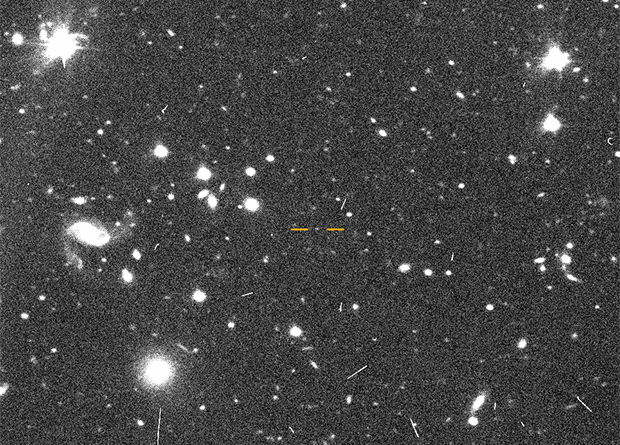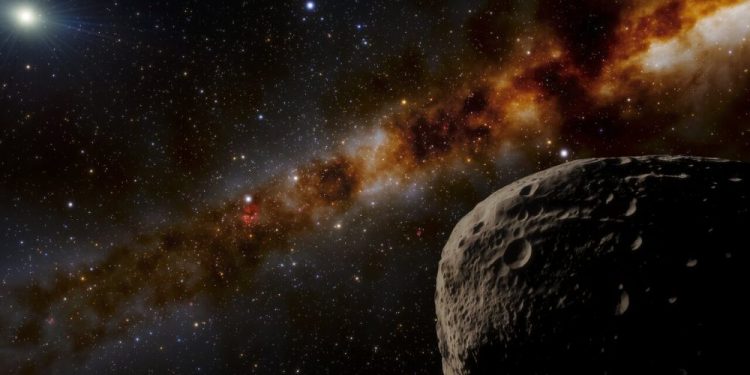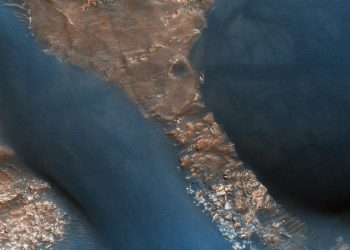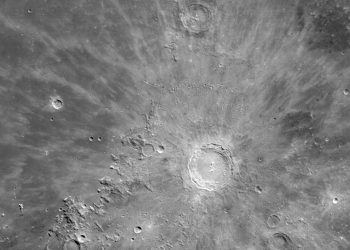Planetary scientists have confirmed the discovery of the solar system’s farthest object from the Sun today, scientifically designated 2018 AG37 and popularly known as Farfarout. The year on it lasts about 10 Earth centuries, and it itself may be an icy dwarf planet, according to the website of the Minor Planet Center.
The original discovery of 2018 AG37 (or FarFarOut) was announced last February by Scott Sheppard of the Carnegie Institution and colleagues who are searching for very distant trans-Neptunian objects, including the Ninth Planet. It is assumed that its mass can be equal to 5-10 Earth masses, and it is located 300-1000 astronomical units from the Sun. Sheppard’s group owns the discovery of the previous record-breaking 2018 VG 18 (or FarOut) object.
The first images of FarFarOut at the time of discovery (in early 2018) were obtained using the 8-meter Subaru telescope located in Hawaii. To confirm the discovery, scientists had to conduct additional observations of the object using Magellanic telescopes and the Gemini North telescope, in order to determine the parameters of its orbit.

Planetologists were able to determine that the average distance from 2018 AG37 to the Sun is 132 astronomical units. By comparison, Pluto is only 39 astronomical units from the Sun. The object has a very elongated orbit, the perihelion of which is 27 astronomical units from the Sun, and the aphelion is 175 astronomical units from our star.
A year on FarFarOut lasts about one thousand Earth years. It is assumed that the object acquired an elongated orbit due to the gravitational interaction with Neptune, the orbit of which it crosses while moving.
Scientists believe 2018 AG37 could be an icy dwarf planet, as the size of the object, based on the observed brightness, is estimated to be 400 kilometers across. It should be noted that FarFarOut is only a nickname, for now, the official name will be approved within the next few years.
Unfortunately, 2018 AG37 will not be able to help scientists in the search for the Ninth Planet – they are interested in objects that do not fall under the gravitational influence of Neptune, such as Sedna or 2012 VP113.
The ninth planet is important not only for scientists but also for space lovers as part of the citizen science project “Backyard Worlds: Planet 9”.
In each case, useful or not, the discovery of 2018 AG37, according to the discoverers, strengthens the position of the Planet X hypothesis and will bring astronomers closer to its discovery. However, not all scientists agree with the assumption of the existence of the ninth planet.
For example, in June of last year, a group of researchers led by Anna-Maria Madigan put forward and substantiated the thesis that the similarity of the parameters of the orbits of objects far from the Sun can be explained without introducing Planet X into the calculations – it is enough to take into account their interaction with space debris and among themselves.
Join the discussion and participate in awesome giveaways in our mobile Telegram group. Join Curiosmos on Telegram Today. t.me/Curiosmos
Sources:
• Howell, E. (2021, February 11). ‘Farfarout’ is officially the most distant object in our solar system.
• Letzter, R. (2021, February 11). Most distant object in our solar system spotted. but it’s not planet nine.
• Lewis, S. (2021, February 11). Astronomers confirm orbit of most distant object ever discovered in our solar system – nicknamed “Farfarout”. • Starr, M. (n.d.). Astronomers just confirmed the most distant known object in the solar system.
• UH News. (2021, February 10). ‘Farfarout!’ solar system’s most DISTANT Planetoid confirmed.











